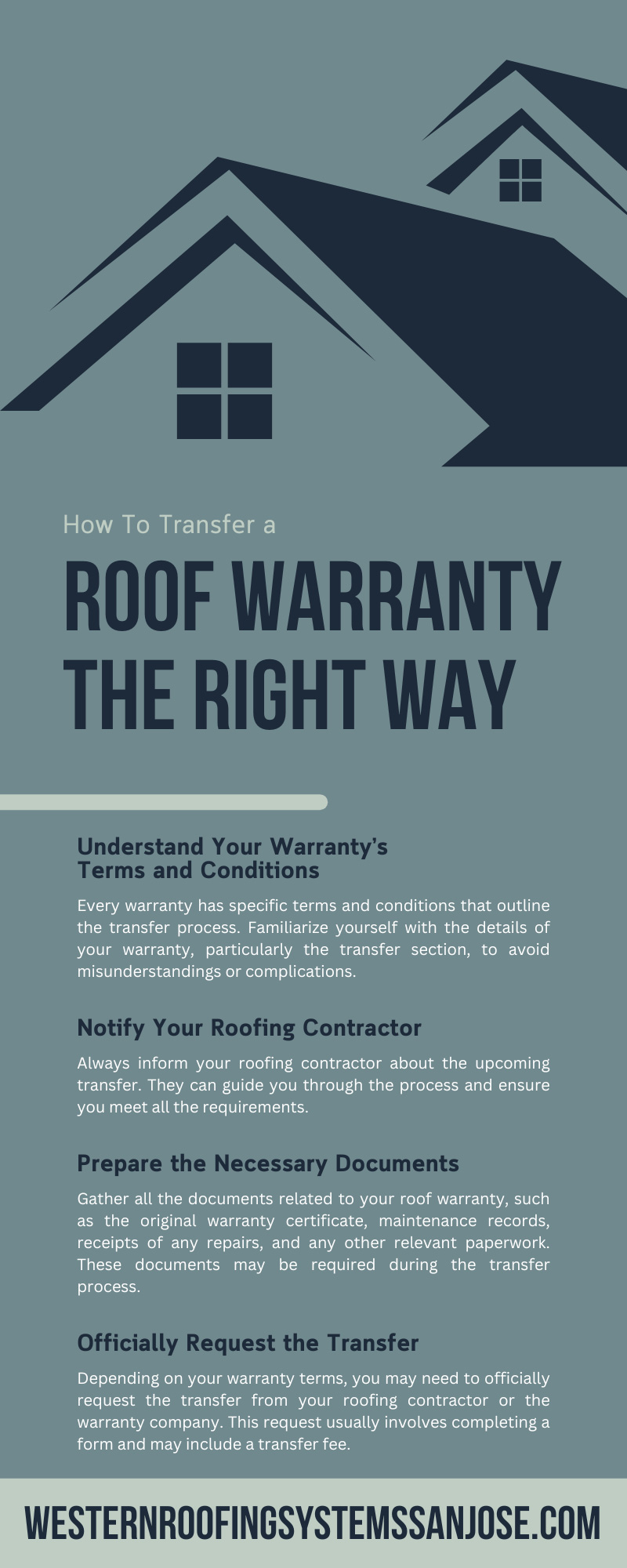Are you a homeowner who has recently purchased a house with an existing roof warranty or do you want to transfer your current one? While having a warranty for your roof can bring peace of mind, it’s important to understand the proper steps and procedures involved in transferring it. The transfer process is where many homeowners often make mistakes that could potentially void their warranty and lead to costly out-of-pocket repairs.
We will walk you through everything you need to know about transferring a roof warranty the right way, so you can protect one of your most valuable investments—your home. Get ready to become an expert on roof warranties and ensure that yours stays valid!
The Importance of Roof Warranties
A roof warranty safeguards against any defects or issues with your roofing system. It stands as a vow of quality and durability from your roofing contractor, assuring you that your roof will withstand the test of time and weather conditions.
Why It Matters When Selling Your Home
A valid roof warranty can significantly increase the value of your home. Prospective buyers will appreciate the peace of mind the coverage provides as they won’t have to bear the financial burden of any necessary repairs or replacements due to potential roofing issues. This coverage also makes your property more appealing in the real estate market. Thus, a roof warranty protects your home and enhances its marketability.
How To Determine if Your Roof Has an Existing Warranty
Before you can transfer a roof warranty, it’s necessary to verify if your roof is under warranty. Here’s how you can determine whether your roof has an existing warranty:
Check for Documentation
Search for any paperwork or documents that came with your home. Look specifically for any records related to roofing services. These files often include warranty details and terms.
Contact the Roofing Contractor
Contact the company directly if you know or can determine who the original roofing contractor in San Jose is. They should have records of their work and can confirm if a warranty was provided and whether it is still in effect.
Get an Inspection
Consider getting an expert roof inspection if documentation is non-existent or the roofing contractor is unresponsive or out of business. A professional roofer can assess the condition of your roof and can possibly determine if it was installed or repaired recently enough to likely be under warranty.
Steps To Take To Transfer Your Roof Warranty During a Home Sale
Before you transfer your roof warranty during a home sale, there are several critical steps you need to take to ensure a smooth and successful process:
Understand Your Warranty’s Terms and Conditions
Every warranty has specific terms and conditions that outline the transfer process. Familiarize yourself with the details of your warranty, particularly the transfer section, to avoid misunderstandings or complications.
Notify Your Roofing Contractor
Always inform your roofing contractor about the upcoming transfer. They can guide you through the process and ensure you meet all the requirements.
Prepare the Necessary Documents
Gather all the documents related to your roof warranty, such as the original warranty certificate, maintenance records, receipts of any repairs, and any other relevant paperwork. These documents may be required during the transfer process.
Officially Request the Transfer
Depending on your warranty terms, you may need to officially request the transfer from your roofing contractor or the warranty company. This request usually involves completing a form and may include a transfer fee.
Transfer Within the Specified Time Frame
Many warranties require that you complete the transfer within a certain time frame (usually around 30 days after home ownership changes). Ensure you initiate the transfer process within this period to prevent the warranty from becoming void.
Remember, each warranty may have slightly different transfer procedures. It’s always best to consult your roofing contractor or the warranty provider when in doubt.
Mistakes To Avoid When Transferring a Roof Warranty
Avoiding common mistakes while transferring a roof warranty is crucial to ensuring your warranty remains valid. Here are a few common pitfalls to steer clear of:
Neglecting to Transfer the Warranty in Time
One of the biggest mistakes homeowners make is not transferring the warranty within the specified time frame. Most warranties have strict deadlines. Missing this window can result in the warranty becoming void.
Failing to Notify the Roofing Contractor
Always inform your roofing contractor about the upcoming transfer. Failing to do so could potentially violate the terms of your warranty.
Overlooking Necessary Documentation
Not having the proper documents can impede the transfer process. Always record all roofing-related documents, including the original warranty certificate, receipts, and maintenance records.
Not Understanding the Warranty Terms
Each warranty has its specific rules, and being unaware of them can lead to complications during the transfer.
Ignoring Maintenance Requirements
Some warranties require regular maintenance for the warranty to remain valid. The warranty could be voided if the necessary maintenance hasn’t been carried out as specified in its terms.
Frequently Asked Questions About Transferring Roof Warranties
Can all roof warranties be transferred?
A: Not all roof warranties are transferable. It depends on the specific terms and conditions of the warranty issued by the roofing contractor or the manufacturing company. Always check the details of your warranty document to confirm if it is transferable.
Can a roof warranty be transferred multiple times?
A: Making multiple transfers depends on the terms of the warranty. Some warranties allow for multiple transfers, but others may only allow for a single transfer. Read your warranty carefully or consult your roofing contractor for accurate information.
Can I transfer a roof warranty if I’ve done work on the roof myself?
A: Any work done on the roof that wasn’t completed by a certified roofing contractor could potentially void the warranty. Before doing any work on your roof, we recommend that you consult the warranty provider or your roofing contractor to understand how it might affect your warranty and its transferability.
Understanding how to transfer a roof warranty the right way is paramount to maintaining your home’s value and providing the new homeowners with peace of mind. It’s a process that requires diligence, knowledge of your warranty’s terms, and timely communication with your roofing contractor.
Remember, your roof is a significant investment, and its warranty is an asset. Therefore, you should strive to preserve its validity during the transition to a new owner. After all, a well-maintained, warranted roof can be a strong selling point that sets your home apart on the real estate market.



Recent Comments